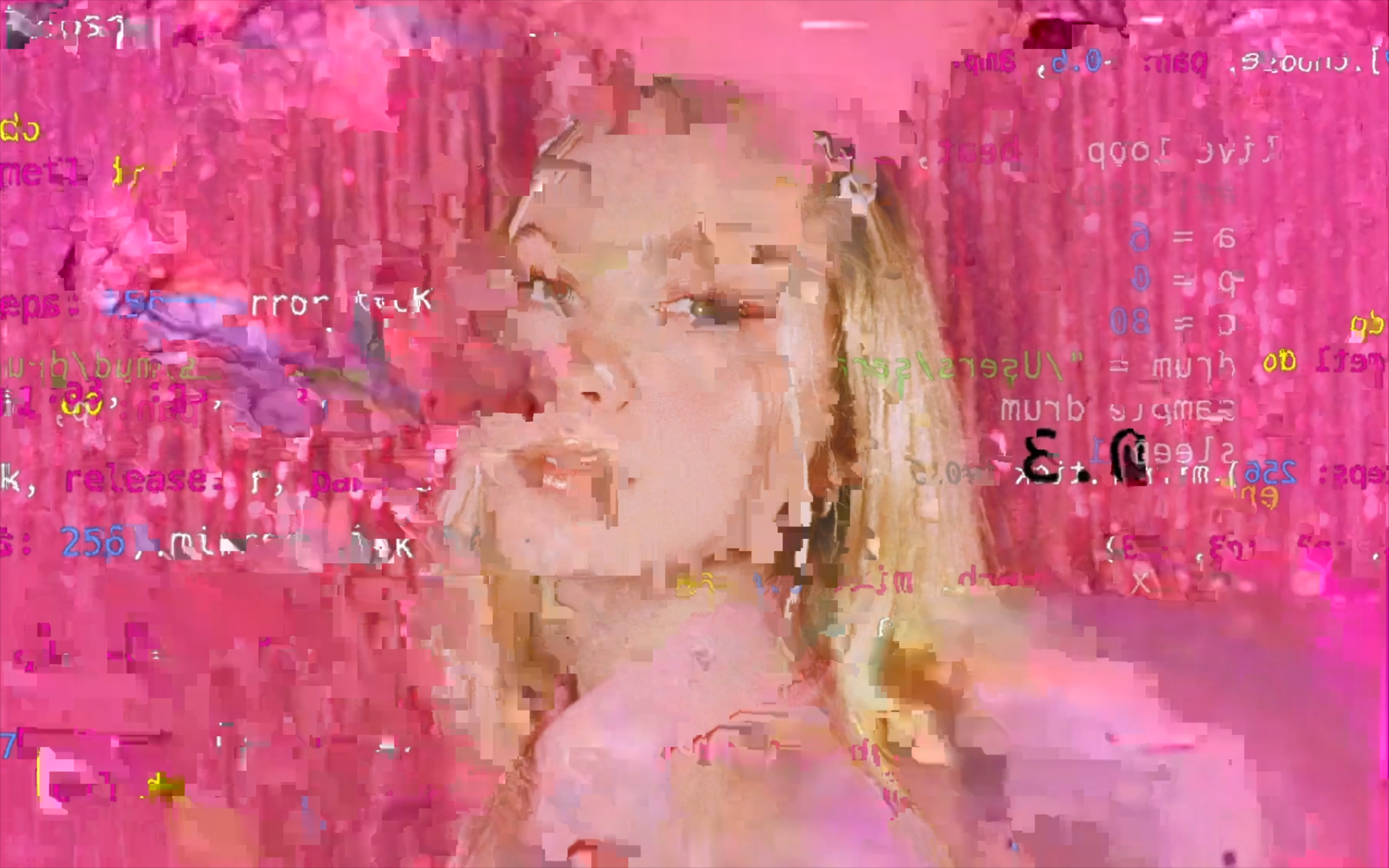ALGORAVE
AS CYBERPUNK AS IT GETS
April 17, 2020
DJ_Dave
DJ_Dave is a NYC-based cyberpunk algorave musician, meaning she uses coded algorithms to create live music without any instruments. She champions algorave as an incredibly collaborative art form across disciplines and an engaging, intuitive introduction to coding for beginners. DJ_Dave is most excited with recent advancements in computer technology to empower girls to embrace STEM and digital arts. BATSHIT TIMES downloaded DJ_Dave’s thoughts on how the coronavirus pandemic affects digital artists, why she uses Sonic Pi to live code music, and why the best color is CMYK magenta (hot pink)!
Before quarantine, I discovered algorave — the ability to make and perform live music using code. I use the program Sonic Pi for all my music-making. All electronic music is code anyway, so algorave musicians just skip a step and go straight into code manipulation to make sounds. And we look sick while doing it!
For me, algorave is geometric. I enjoy exploring the dichotomy between the digital aspects of live-coding and the organicness of non-simulated music. I’m experimenting with the capabilities of code programs to make fluid, natural-sounding music and am applying that approach to songs I release in the future.
As an extremely collaborative artform, I think algorave is unique in its ability to bring artists from all sorts of disciplines together and to encourage people to find more ways to innovate and become familiar with new things. Sonic Pi was specifically designed as an educational tool, so algorave works as a way to introduce a new generation of artists without access to the arts or STEM programs to music and coding. I was so intimidated by coding for the way it looks, so complicated and confusing, but it really isn’t. I found it’s a cool way to discover new sounds and ways of manipulating music.
In college, I developed an app with colleague Kiley Leff called Outro, a platform for women, people of color, and the LGBTQIA+ community to rate and review nightlife spaces based on the safety and quality of that space. At the time, I was constantly communicating back and forth with app developers to create my product, but I had a hard time maintaining control over its outcome because there was so much about coding I didn’t understand. Since I was still enrolled in school, I attended a few front-end web development classes to give myself an intro into the world of coding, and in my first class, I realized just how much I enjoyed learning about it.
As someone who almost entirely creates digital work, I’m super into the cyber-modern age. Since fully involving myself in algorave, I’ve found that the widespread emergence of this kind of art scene introduces people to so many mediums and ways of making, ones I never thought possible. I think the term “cyberpunk” encapsulates a lot going on in the underground art and music scenes right now. Algorave is described as an evolution of punk, so I think my work and the work of the entire algorave community is about as cyberpunk as it can get.
I’ve performed algorave live one single time and it was like nothing I’ve ever done before. Despite playing other types of live music plenty of times when I was younger, something about performing music while stationary behind a laptop is somehow really involved and exciting. You find ways to make algorave a visual performance and involve your audience, watching them watch you. That is really fun.
I originally wanted DJ_Dave to be a nameless, faceless persona, someone through whom I could create music with code. But I eventually grew so involved with DJ_Dave that she became completely synonymous with myself as a creator and musician.
Since I’m a girl making music with code, I thought it would be fun to exaggerate each element of my persona and utilize the aesthetics of nerdy, 90’s tech culture. Algorave is a unique combination of both computer science communities and club scenes, so I wanted that awesome juxtaposition of nerdy and cool to be really obvious in all of my visual branding. Furthermore, I wanted to keep my content informative, so while someone might scroll through my Instagram and think, “This is cute,” they’re also learning something about the way I make music through code.
The only color I confidently use in my marketing is CMYK magenta (better known as hot pink). I add it to everything — every logo, every background, every heading. I’ve always loved the color, and I’m starting to think I was drawn to algorave because the main color in Sonic Pi happens to be CMYK magenta.
My music borders electronic and indie technopop, but my constant collaboration with artists of varying genres helps shape my sound. These artists also happen to be primarily girls. The algorave community is largely composed of girls in tech from all backgrounds!
We lacked art for the sake of art before quarantine. I felt very few companies and institutions were investing in quality and were more concerned in financial gain, forcing many artists to create for others in order to survive. Thankfully, I now feel that there are —






